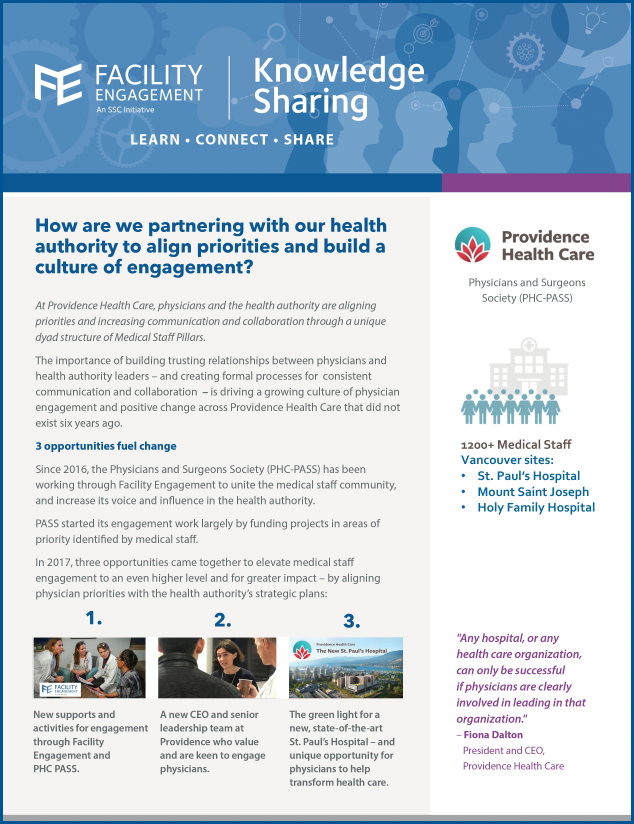
"This structure has allowed us accessibility to Senior Leaders in a way I’d never experienced or seen before in my first decade on staff at PHC." – Dr Adrienne Melck, General Surgeon – Physician Consultant Lead, Quality Pillar
Providence Health Care senior executives are collaborating with physician leaders and medical staff advisors in four "Strategic Pillars," aligning with the organization's strategic plan.
The unique, formalized structure creates relationships and opportunities for collaboration; empowering medical staff to have influence and involvement in health authority plans and activities on patient care and the hospital workplace.
Our Story
"Any hospital, or any health care organization, can only be successful if physicians are clearly involved in leading in that organization." – Fiona Dalton,President and CEO, Providence Health Care
Since 2016, the Providence Health Care Physicians and Surgeons Society (PHC-PASS) has been working through Facility Engagement to unite the medical staff community, and increase its voice and influence in the health authority.
PASS started its engagement work largely by funding projects in areas of priority identified by medical staff.
In 2017, three opportunities came together to elevate medical staff engagement to an even higher level and for greater impact – by aligning physician priorities with the health authority’s strategic plans:

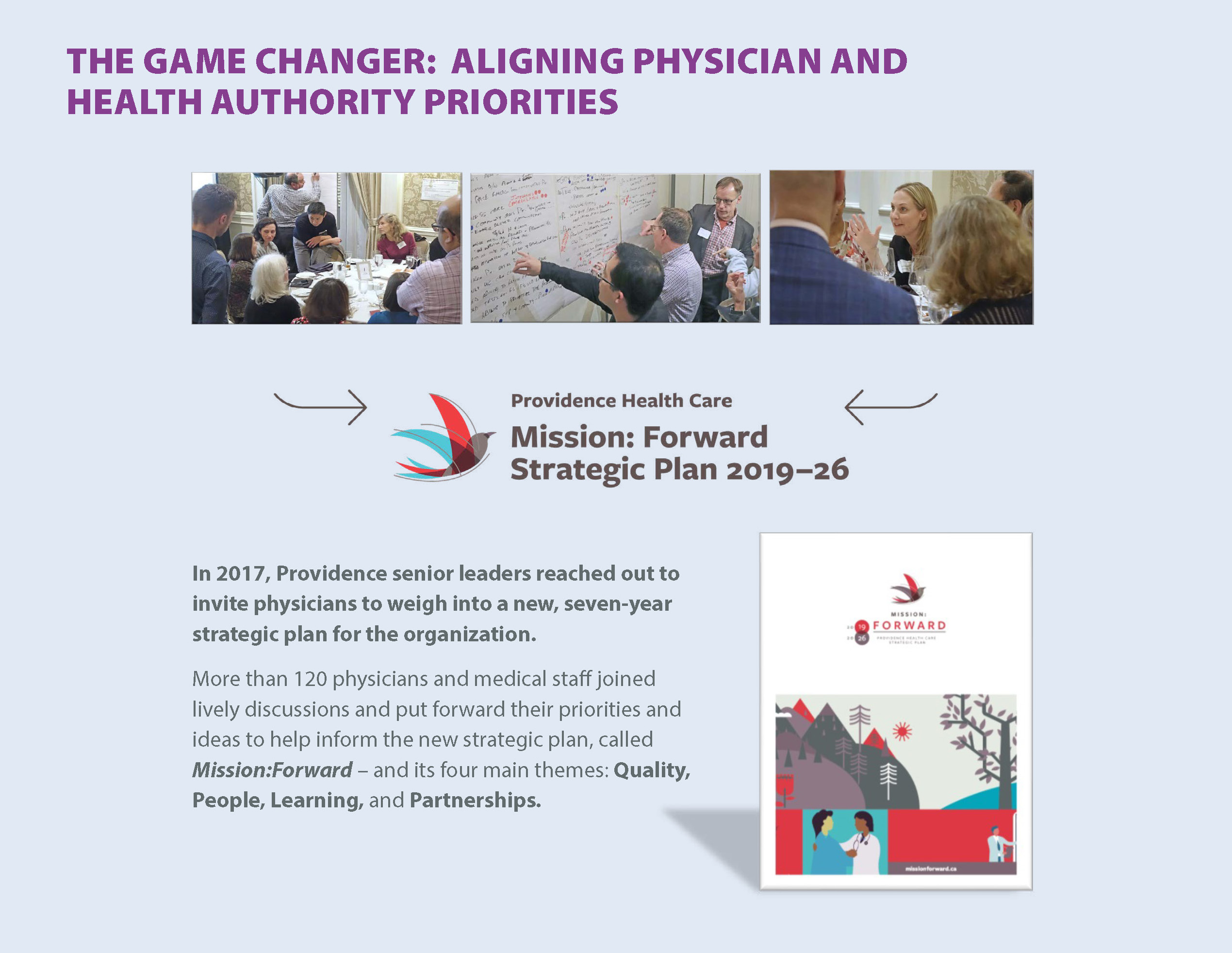
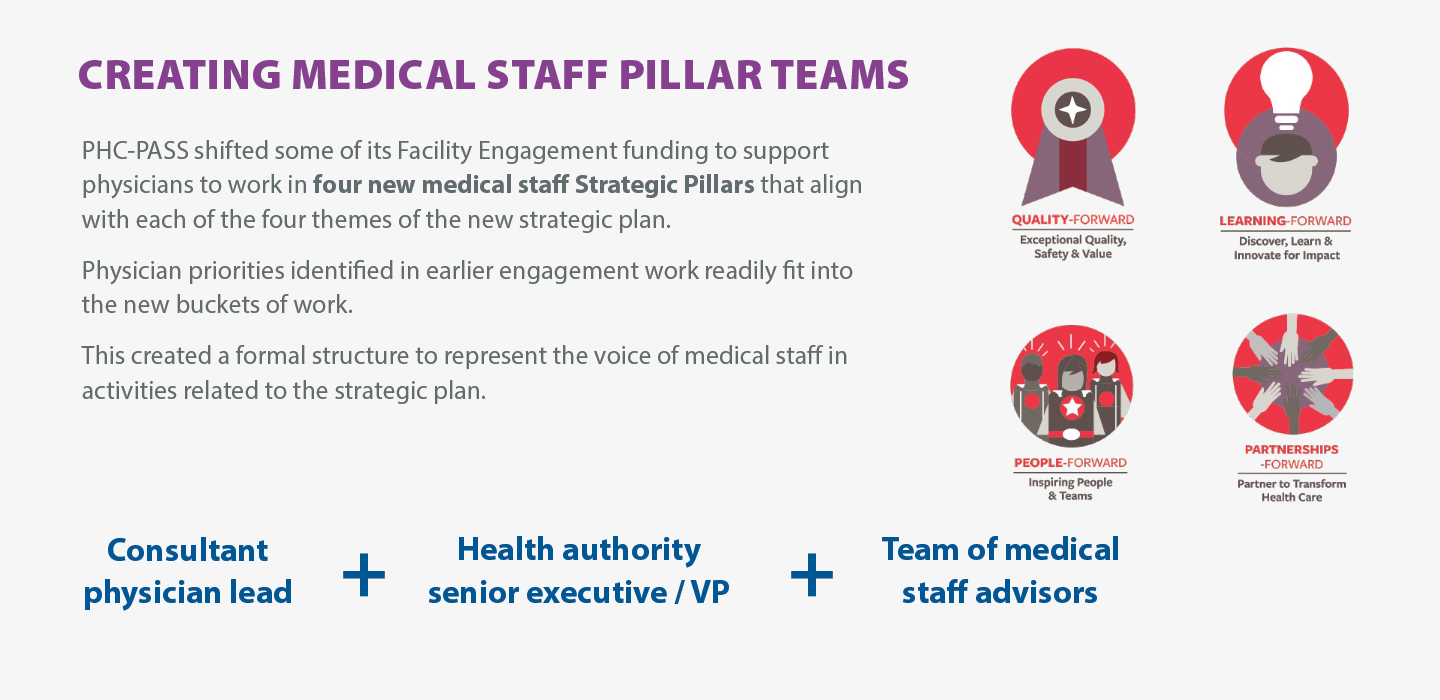
How do the medical staff Strategic Pillars work?
Pillar partnership / DYAD structure
Each pillar is co-led by a Consultant Physician lead who partners with a health authority senior executive team member most connected to the work of that pillar.
Interested Medical Staff work together on Pillar Advisory Committees (PACs).
Primary goals of the Pillars
Inform and create activities related to each theme that are relevant to medical staff at large.
Participate in strategic plan progress reporting at the senior leadership table, bringing forward views and perspectives of the medical staff.
Support two-way communication, and increased transparency to medical staff about health authority plans and decisions.
Role of the co-leads
Consultant physician leads are invited to attend quarterly senior leadership meetings, and other leadership forums across the organization. They:
Meet with the Engagement Working Group and hospital’s Chief Strategy Officer 1x month, and PASS Board/leadership team and other Pillar leads every quarter to work together to:
Plan and implement big ideas and themes coming out of the Pillars.
Ensure the work of the four different pillars were aligned with each other and the organization’s strategic plan.
Advocate for issues raised by MSA members, with senior executives able and willing to collaborate further to help solve problems.
Advisory team activities
Collect medical staff input and feedback on senior leadership strategies as they relate to that pillar.
Explore and create opportunities for medical staff to engage and participate in advancing the themes of the pillar.
Actively communicate with the medical staff at large to increase awareness about pillar activities and opportunities: (MSA quarterly meetings, Department. roadshows, newsletters, e-mail, Signal chat groups).
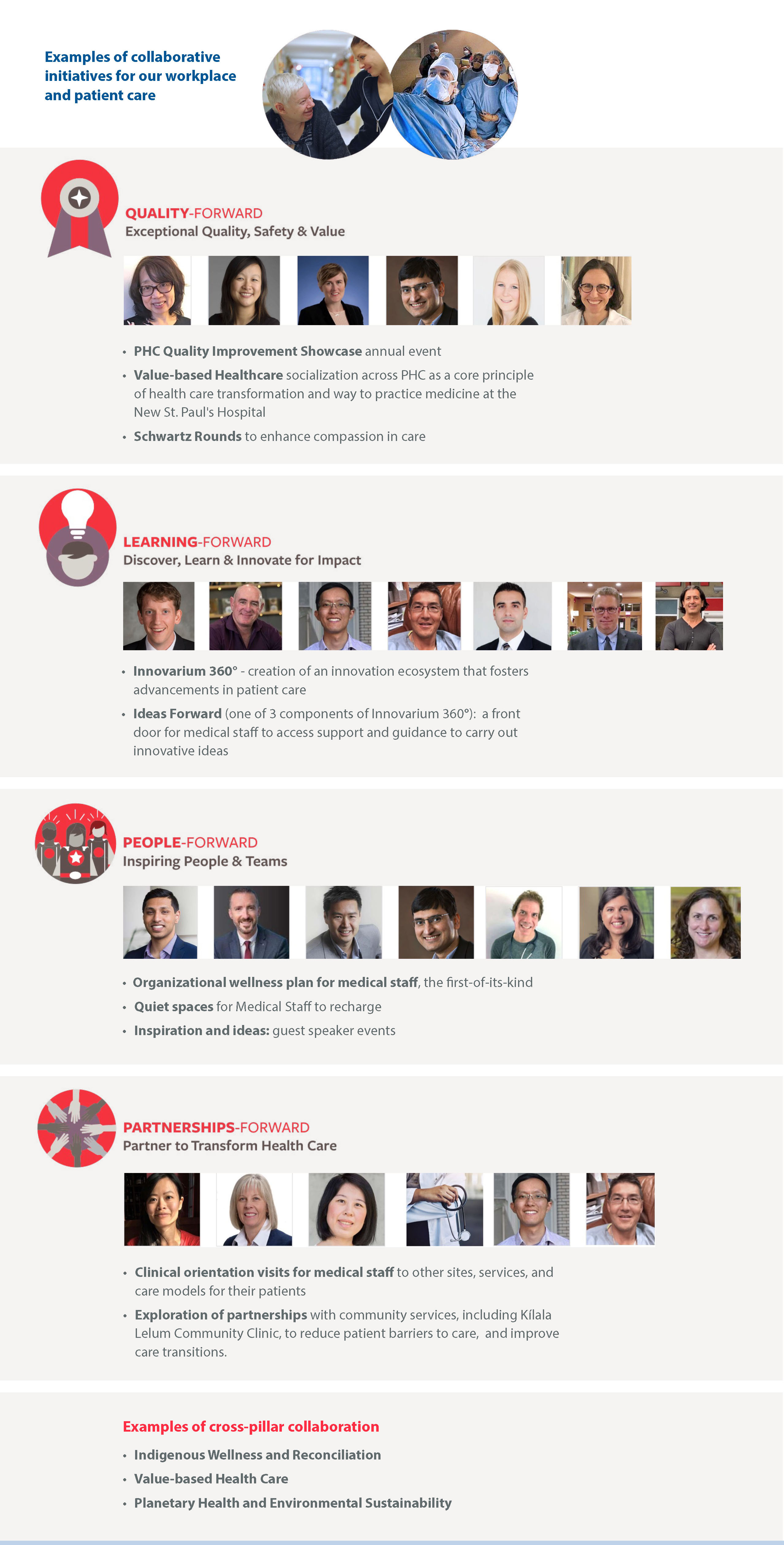
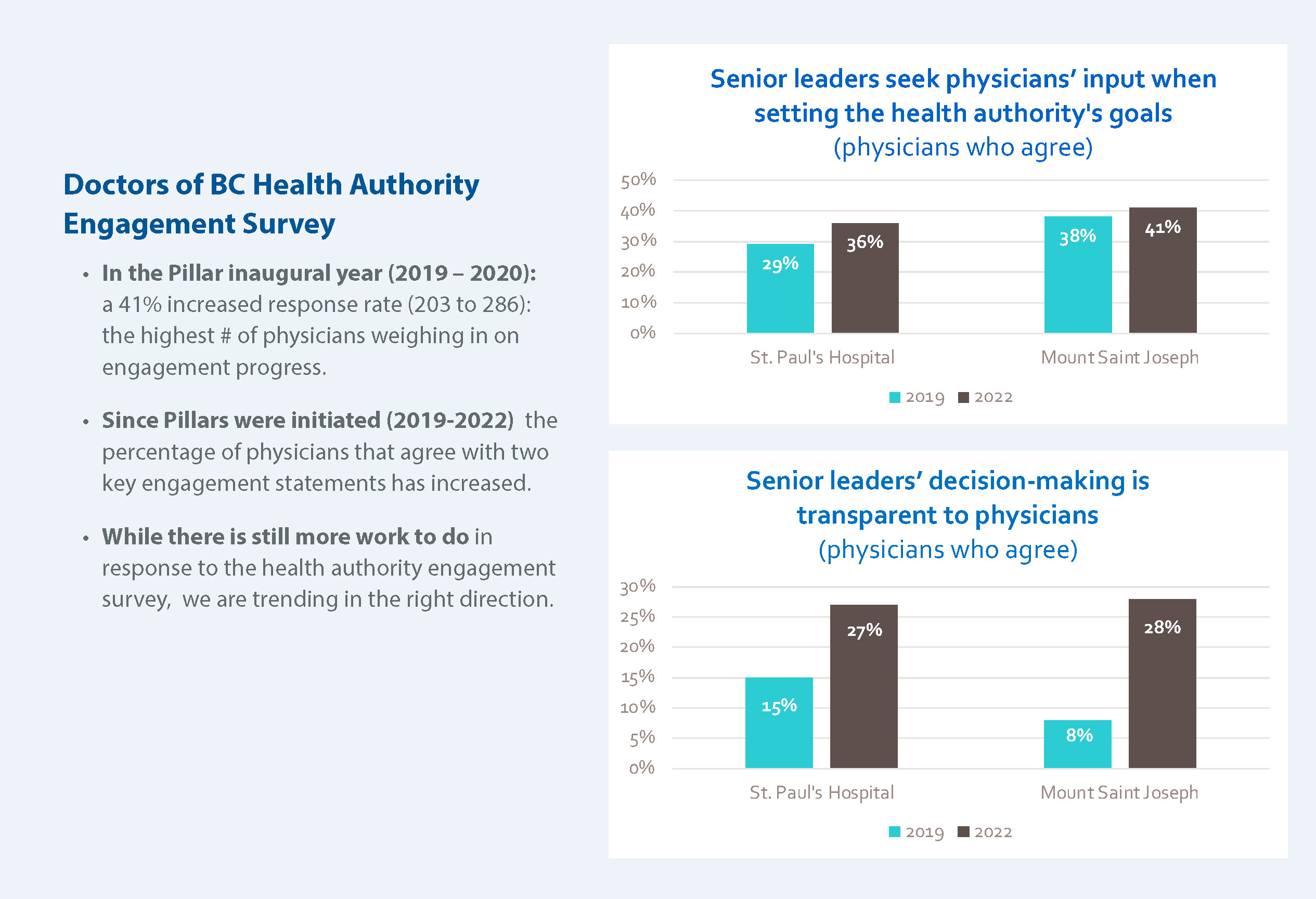
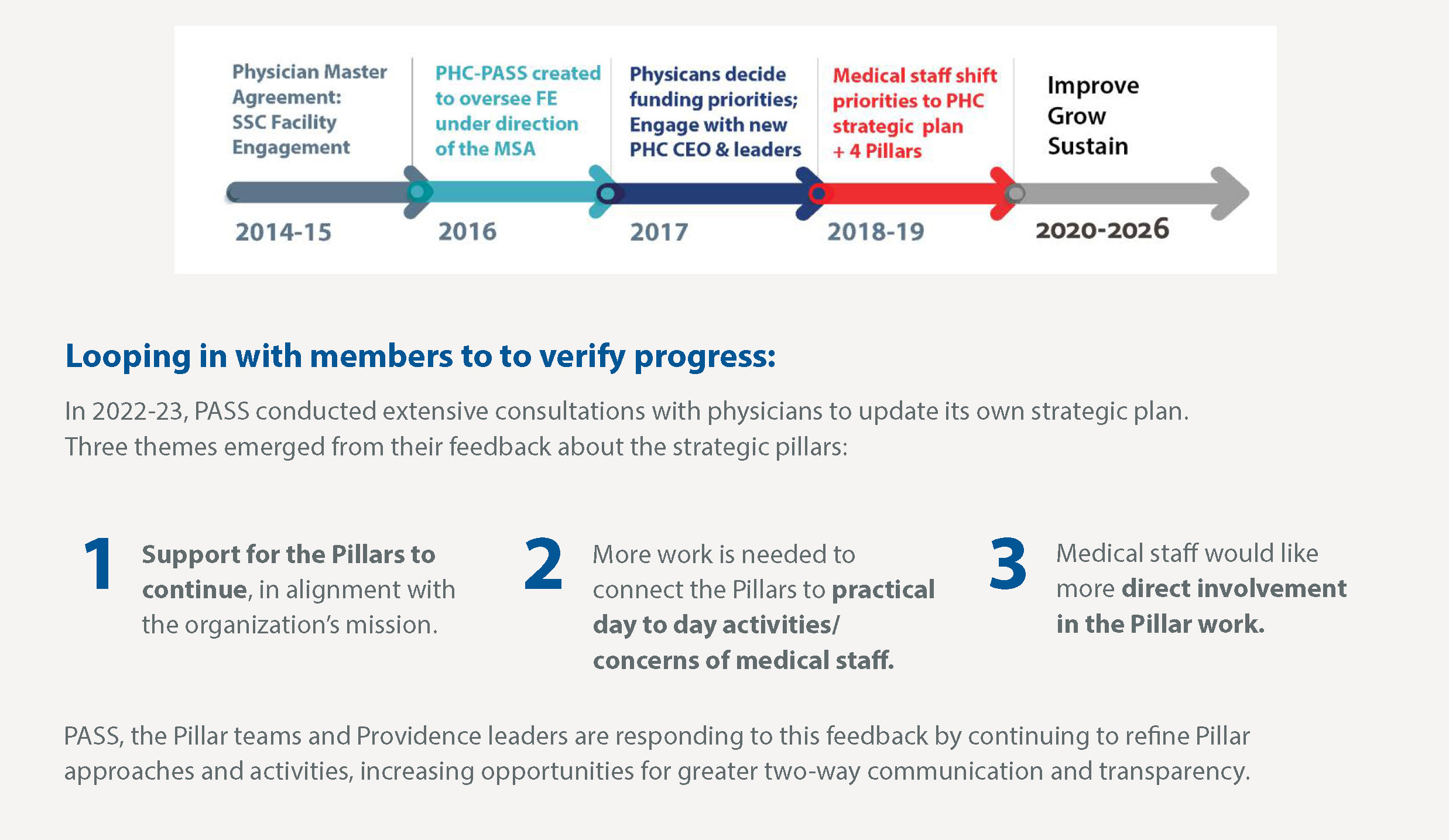
The Pillar structure and processes enable medical staff to communicate and collaborate with each other, and with the health authority.
The CEO and executive team value and take seriously the contributions of physicians in plans, activities and problem-solving.
A dedicated effort has been made by PHC-PASS and the health authority to have physicians align their workplace and patient care priorities with its 7-year strategic plan.
Senior health authority leaders live up to their commitment to engage deeply: consistently showing up to build relationships, engage, and communicate with medical staff through the pillars, and directly through many other opportunities.
Efforts to improve transparency by senior health authority leaders continue to grow, by inviting physicians to the tables, involving the medical staff voice in annual priority-setting, and openly reporting out about health authority activities and decisions.


